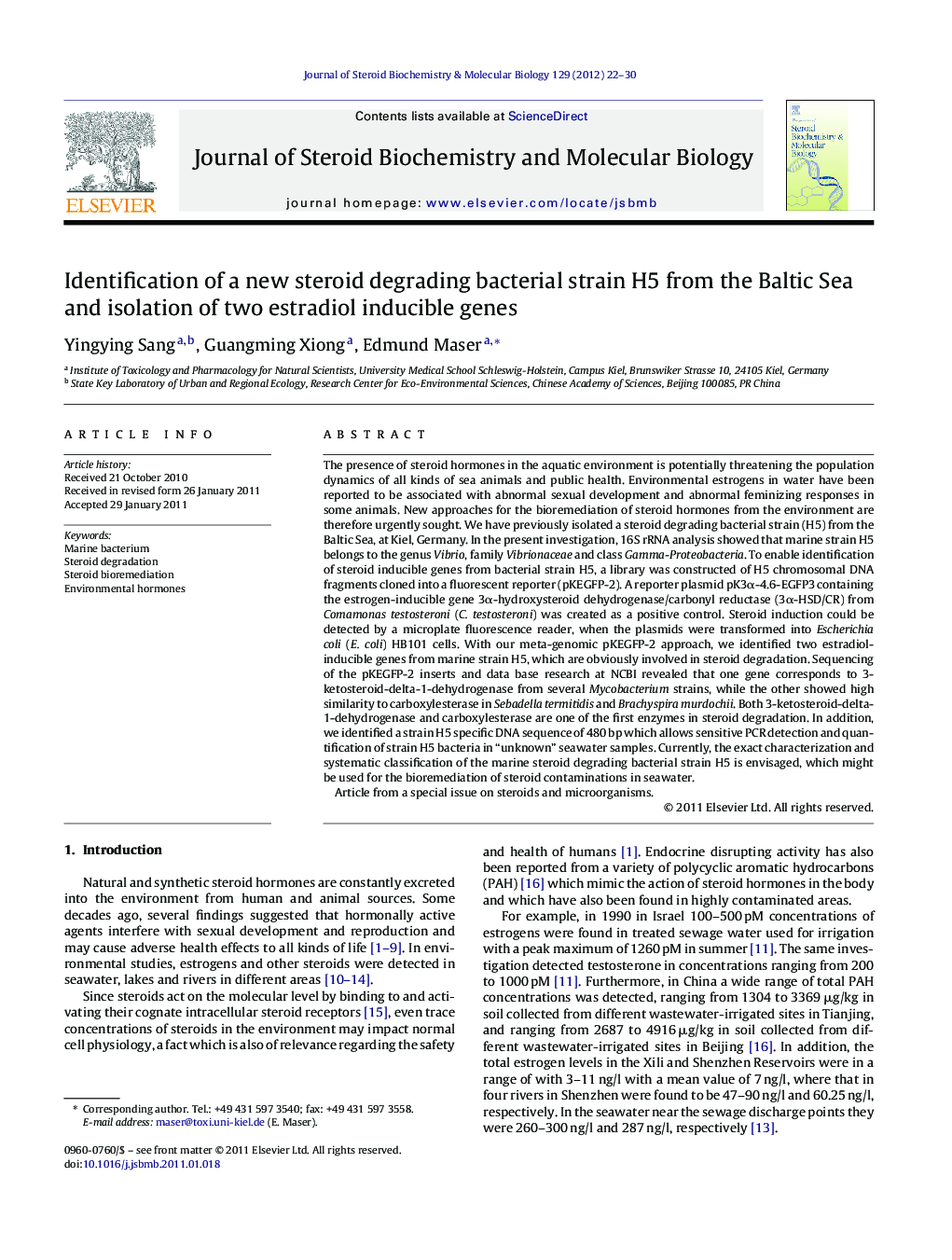| کد مقاله | کد نشریه | سال انتشار | مقاله انگلیسی | نسخه تمام متن |
|---|---|---|---|---|
| 1991745 | 1541025 | 2012 | 9 صفحه PDF | دانلود رایگان |

The presence of steroid hormones in the aquatic environment is potentially threatening the population dynamics of all kinds of sea animals and public health. Environmental estrogens in water have been reported to be associated with abnormal sexual development and abnormal feminizing responses in some animals. New approaches for the bioremediation of steroid hormones from the environment are therefore urgently sought. We have previously isolated a steroid degrading bacterial strain (H5) from the Baltic Sea, at Kiel, Germany. In the present investigation, 16S rRNA analysis showed that marine strain H5 belongs to the genus Vibrio, family Vibrionaceae and class Gamma-Proteobacteria. To enable identification of steroid inducible genes from bacterial strain H5, a library was constructed of H5 chromosomal DNA fragments cloned into a fluorescent reporter (pKEGFP-2). A reporter plasmid pK3α-4.6-EGFP3 containing the estrogen-inducible gene 3α-hydroxysteroid dehydrogenase/carbonyl reductase (3α-HSD/CR) from Comamonas testosteroni (C. testosteroni) was created as a positive control. Steroid induction could be detected by a microplate fluorescence reader, when the plasmids were transformed into Escherichia coli (E. coli) HB101 cells. With our meta-genomic pKEGFP-2 approach, we identified two estradiol-inducible genes from marine strain H5, which are obviously involved in steroid degradation. Sequencing of the pKEGFP-2 inserts and data base research at NCBI revealed that one gene corresponds to 3-ketosteroid-delta-1-dehydrogenase from several Mycobacterium strains, while the other showed high similarity to carboxylesterase in Sebadella termitidis and Brachyspira murdochii. Both 3-ketosteroid-delta-1-dehydrogenase and carboxylesterase are one of the first enzymes in steroid degradation. In addition, we identified a strain H5 specific DNA sequence of 480 bp which allows sensitive PCR detection and quantification of strain H5 bacteria in “unknown” seawater samples. Currently, the exact characterization and systematic classification of the marine steroid degrading bacterial strain H5 is envisaged, which might be used for the bioremediation of steroid contaminations in seawater.Article from a special issue on steroids and microorganisms.
Journal: The Journal of Steroid Biochemistry and Molecular Biology - Volume 129, Issues 1–2, March 2012, Pages 22–30